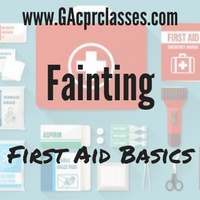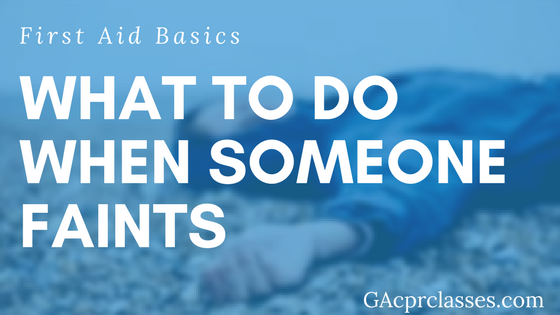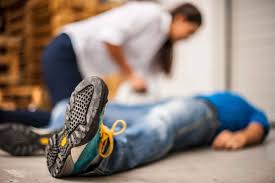First Aid Basics: What To Do When Someone Faints

[adinserter block=”2″]
[adinserter block=”3″]

Fainting

Commonly referred to as “passing out” and is more technically known as Syncope. Fainting occurs when the the blood flow to the brain is insufficient to the point that the brain temporarily shuts down and is usually followed with a complete return to a normal state of wakefulness. Loss of consciousness is temporary and usually lasts less than a minute.
Fainting falls in the middle of the spectrum for First Aid medical conditions. It can be the sign of a serious medical disorder, or it can have no meaning at all. Treat fainting as a medical emergency until signs and symptoms are relieved and the cause of fainting is known.
Common Causes
Before getting help for fainting, it is important to gauge how serious the incident is before calling 911. Sometimes the person can come back to consciousness with no issues and be perfectly fine. Other times, fainting can be due to an underlying serious medical condition and advanced help will be needed immediately upon recognition of a problem.
Non-Life Threatening Causes of Fainting
- Dehydration
- Exhaustion
- Heavy Sweating
- Overheating
- Pooling Of Blood In The Legs
- Stress
- Sudden Changes To Body Position
Life Threatening Causes of Fainting
- A Family History Of Recurring Fainting Or Sudden Death
- Irregularities or Palpitations Of The Heart
- Fainting While Exercising
- Serious Heart Conditions Like Bradycardia, Tachycardia, or Blood Flow Obstruction
[adinserter block=”2″]
[adinserter block=”3″]
What To Do When Someone Faints

1. Check the area to make sure to is safe to approach. If you can not safely get to the person (Fire, Gas, Electrical problem, etc), call 911 and wait for help.
2. Upon arriving at the person who has fainted, position the person on his or her back and on a firm, flat surface. Firmly tap shoulders and ask if everything is okay to check responsiveness. Check for signs of circulation like breathing, coughing, or movement.
- If the person does NOT regain consciousness within 1 minute, call 911 or local emergency number. It the person is also not breathing, start CPR by pushing hard and fast in the center of the chest.
- If the person does regain consciousness, do not have the person get up too quickly to be able to reduce the chances of fainting again. If the person was injured during a fall when they fainted, you will have to perform any First Aid for bumps, bruises, cuts and scrapes among other issues. Monitor the person to make sure there are no continuing issues. Call for help if the person faints more than once, as that can be a sign of a more serious underlying medical condition.
If you feel faint, sit or lay down until the feeling goes away. Placing you head between your knees when sitting can help increase blood flow to help you stabilize.
After Care
Even though fainting is not always serious, it is recommended that the victim be evaluated by a physician afterwards. This can ensure that there are no underlying medical conditions that you may have been unaware of. ECG (Electrocardiograms), echocardiograms, exercise stress tests, and Holter monitor are different types of test that maybe needed to rule out different cardiac issues.
Source: American Heart Association
Disclaimer: There are ads and affiliate links within our posts. We earn a small commission if you do choose to use the links and they do not add any additional cost to you if you do use them. Products are recommended because they are useful and helpful, not because of the commission possibly earned. Only use the links if you believe they can help you or you are interested in learning more about an advertisement.

Proudly offering American Heart Association workplace CPR training classes in the Greater Atlanta area. 3 local offices, online and classroom options, and cards are issued at the time you complete training. ACLS, CPR, BLS, First Aid, and PALS classes are available.
[adinserter block=”2″]
[adinserter block=”3″]